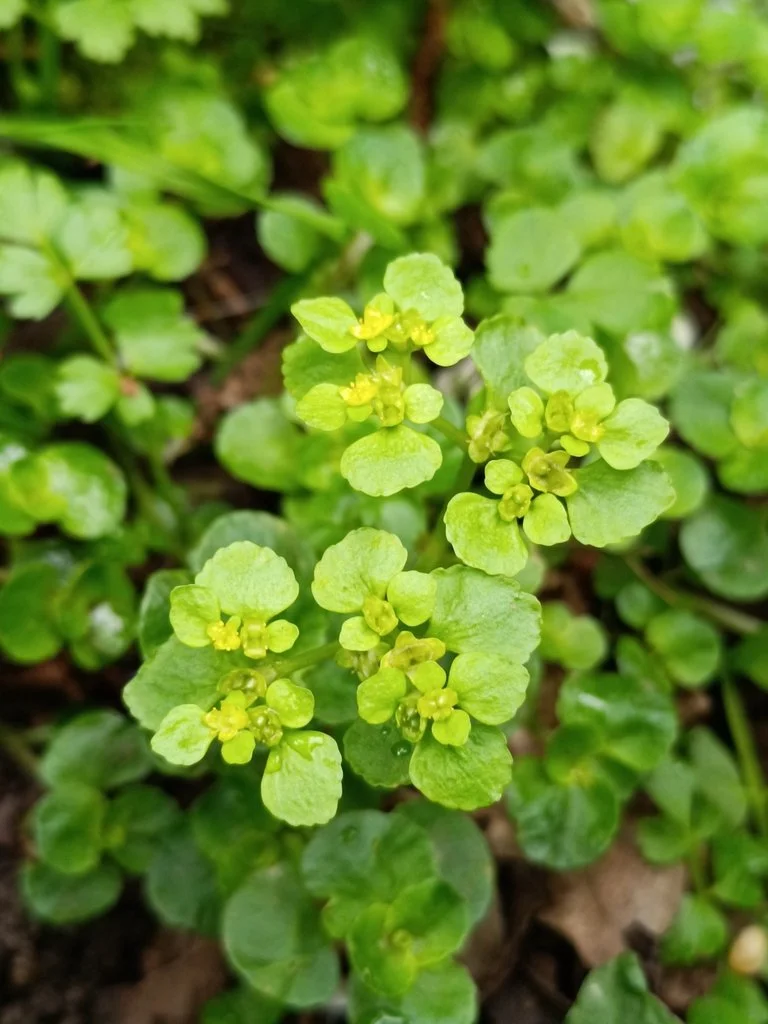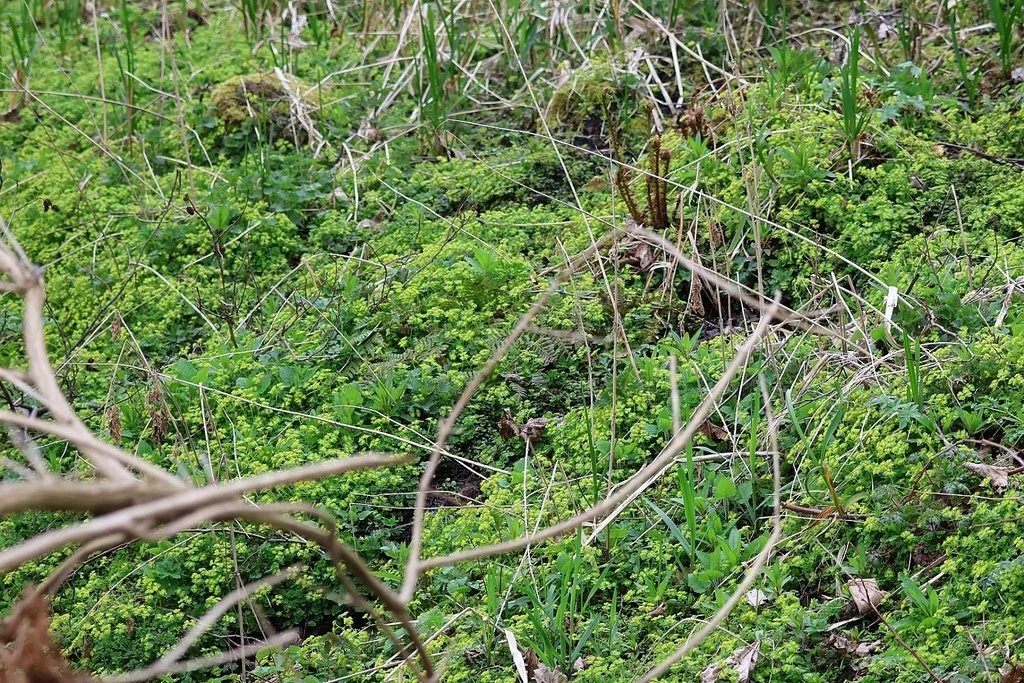#91 Opposite-leaved Golden Saxifrage by Andy Barker
Meet Andy Barker, YHEDT trustee and Chief Operating Officer for AECOM!
Andy is a Trustee of the YHEDT, a role he has undertaken since 2007. Andy is a professional Ecologist by background starting his career in 1990 at the Ecological Advisory Service (now West Yorkshire Ecology), where he completed the Phase 1 Habitat Survey of Calderdale in West Yorkshire for English Nature; and more specifically Jeff Lunn his fellow Trustee. For the next 7 years Andy gained an intimate knowledge of the habitats and plant communities of Yorkshire carrying out habitat surveys of the major landholdings of Yorkshire Water across Yorkshire, Second Tier Nature conservation sites in West Yorkshire, NVC surveys across the Yorkshire Dales and North York Moors National Parks. Andy moved to Bullen Consultants (now AECOM) in 1998 and led the first comprehensive second tier nature conservation site survey in North Yorkshire. This was the last major survey Andy undertook before moving into EIA management and then later business management. Andy is currently the Chief Operating Officer for Europe and India in AECOM and when visiting colleagues in other countries takes every opportunity to make site visits with other Ecologists to keep his hand in.
Despite all his working life being based in Yorkshire, Andy is from and has lived for many years in North Lincolnshire.
Opposite-leaved Golden Saxifrage - xzczurcik on iNaturalist
Andy’s chosen species, Chrysosplenium oppositifolium, commonly known as the Opposite-leaved Golden-saxifrage, is a small and some might say insignificant plant species found in various parts of Europe, but of course most importantly, Yorkshire. Andy first encountered this species whilst completing the Phase 1 Habitat Survey in Calderdale in the early 1990’s, and back in the days of all notes being handwritten and the fact that it has one of the longest English and scientific names, he still always found himself noting its presence in the form of target notes.
Chrysosplenium oppositifolium is a perennial herbaceous plant belonging to the Saxifragaceae family. It is characterized by its low, creeping growth habit, with slightly hairy, square stems. The leaves are opposite, rounded or oblong, with blunt teeth. Its reproductive strategy includes both vegetative propagation through readily rooting stems at the nodes as it creeps out; and sexual reproduction via its small inconspicuous flowers, which show from March to July and which are greenish yellow and surrounded by bright yellow-green leafy bracts, giving a beautiful golden hue in spring and which of course gives its fantastic name.
Across Yorkshire this plant is commonly found in damp, shady woodlands and is easily recognisable as it usually occurs in quite abundant mats. It can also be found in woodland flushes. Keep your eye out in any shady woodland along stream banks, and occasionally and less commonly in meadows and marshy areas where the soil remains consistently moist.
In Yorkshire, Opposite-leaved Golden Saxifrage has been recorded in various botanical surveys and was first recorded in Yorkshire in Johnsons Gerard, 1633. In Yorkshire it is found across all of the modern counties.
It is found frequently in the western half of West and South Yorkshire on the Pennine fringes where it forms large mats often growing over rocks getting splashed by the adjacent streams, providing a beautiful golden yellow display of flowers brightening up often shady and dank steep sided woodlands from March onwards. Its presence reduces quickly away from the steeper valley sides and woodlands to just a few isolated occurrences in the eastern halves of these counties.
In North Yorkshire, it has a very similar distribution being found frequently in Craven District, though is perhaps under recorded further north in this District. There is an absence in the Vale of York before reappearing widely across the North York Moors National Park. It is sadly largely absent from East Riding and Andy has yet to find it in North Lincolnshire, where he has lived for many years now. Nevertheless, the plant remains one of Andy’s favourites: ‘I chose this species as it was one of the first plants I was able to key out and identify myself; sat in a very damp Wade Wood in Calderdale, thanks, not least to the patient tutoring of the Late Geoffrey Wilmore whose passion and knowledge of botanical recording and Ecology has stayed with me ever since and a skill I don’t often get the chance to practice as often as I would like!’
Chrysosplenium oppositifolium often shares its habitat with a variety of other plants, most notably the thallose liverworts Marchantia polymorpha, Conacephalium conicum and Pellia epiphylla (Lavin and Wilmore 1994). Its most notable other associated species are Wavy Bittercress (Cardamine flexuosa), Pink Purslane (Claytonia sibirica) Greater Woodrush (Luzula sylvatica) (Wilmore Lunn and Rodwell); and a personal favourite of Andy’s, lemon scented fern (Oreopteris limbosperma).
Opposite-leaved Golden Saxifrage in situ - ikelman on iNaturalist
It is not easily confused with other species but does have a very close relation of Alternate-leaved Golden Saxifrage (Chrysoplenium alternifolium) which can often grow alongside it, but which is much rarer in Yorkshire and far less recorded. As its name suggests, it is distinguished by the leaf alignment on the stem and its rarity may be due to recorders being less eagle eyed as much as it is a truly less common species!
Plants in the Saxifragaceae family have historically been used in traditional medicine. The name “saxifrage” itself means “stone-breaker,” hinting at the plant’s reputed ability to break up kidney stones. Although there is no direct evidence of this, other members of the family have been valued for their ability to assist healing wounds and soothing skin irritations.
Recording and monitoring
This is not currently considered an at-risk species, still found plentifully in the right habitats, but its preferences could make it vulnerable to changes in land use and water management in the upland cloughs and streams. Records of Opposite-leaved Golden Saxifrage can be submitted to your local LERC, VC Recorder, or the BSBI.
Further information and acknowledgements
NEYEDC would like to thank Andy for his time and expertise in helping to create this blog.



